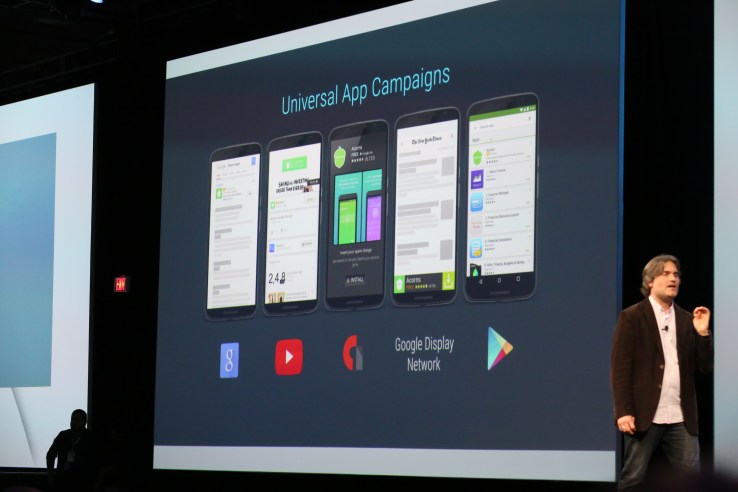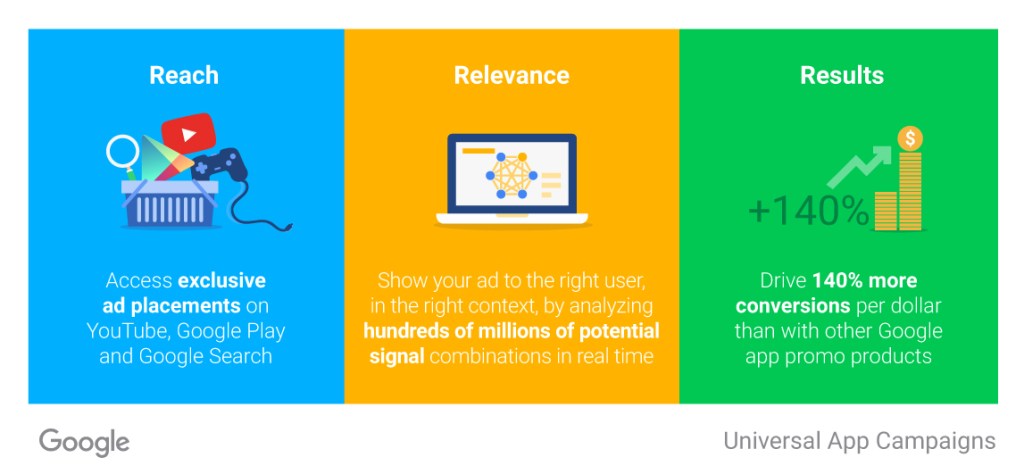
Two years ago, Google launched universal app campaigns (UAC) to make it easier for developers to easily promote their iOS and Android apps across its various platforms. Instead of having to set up separate campaigns for Search and Google Play, for example, developers can simply use UAC with a few lines of text, images and their bid and the service then handles the rest, based on what the developers want to optimize their campaigns for (installs or in-app conversions, for example).
This has turned out to be such an effective service — thanks in large part to the company’s advances in machine learning — that Google is moving all app install campaigns to UAC over the rest of this year. Starting October 16th, all new app install campaigns created in AdWords will run on UAC, and starting November 15th, all existing Search, Display and YouTube app promo campaigns will stop running.

Google tells us that it has delivered more than 6 billion installs to developers so far. That’s a big increase over the last stats it offered in 2016. At that time, Google said it had delivered 2 billion installs. The company also told us that UAC already delivers more than 50 percent of all app downloads from ads today and that the machine learning algorithms that power the service analyze more than 300 million potential signal combinations in real time. That means the service looks at signals like where people are looking at an ad, for example, and what they are likely trying to do.
What’s most important, though, is that these campaigns perform very well. UACs drive 140 percent more conversions per dollar than the company’s regular app campaigns. Given these numbers, it’s no surprise that Google is doubling down on this campaign type.
One major advantage of UAC is that it allows developers to not just optimize for app installs but also for in-app engagement and lifetime value. For many developers, it’s now less about getting low-value installs but to make sure that the users they get want to make a purchase, book a hotel room or subscribe to their service. Google argues that its algorithms know enough about potential users to allow it to automatically optimize when and where it shows a developer’s ads to bring the right users to the app.
“Having entertained over 1 billion people to-date, at Zynga we’re focused on creating games that are designed to entertain consumer audiences over the long-term while delivering strong operational efficiency,” Zynga’s VP of User Acquisition Kimberly Corbett told me about her company’s use of UACs. “As such, our User Acquisition strategy has evolved to focus on bringing in players who will become part of our forever franchises, including games like Zynga Poker and Words With Friends, which are 10 and 8 years old, respectively.”
Source: Techcrunch
Comments
Post a Comment